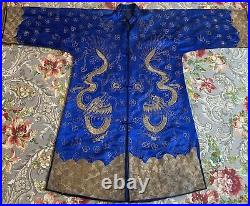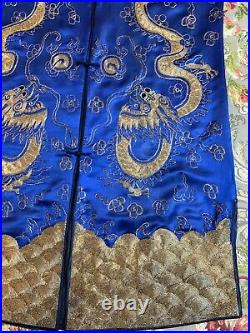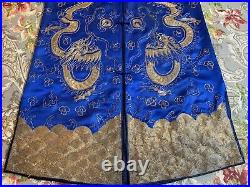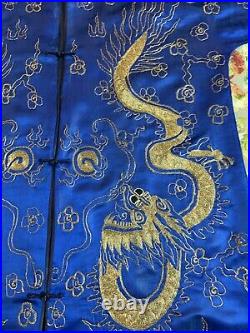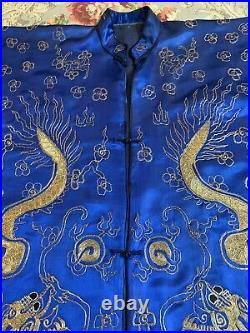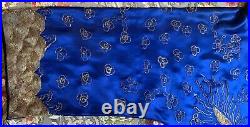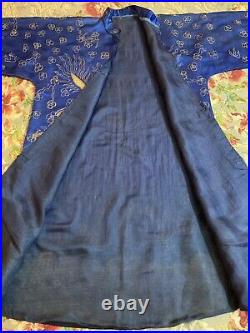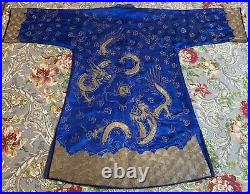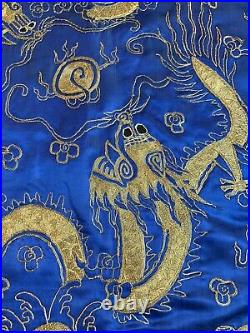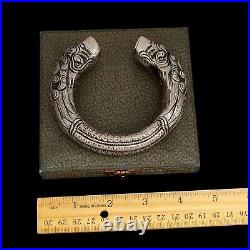
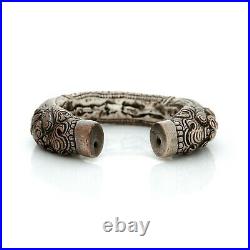

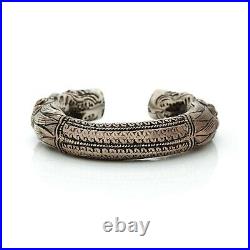
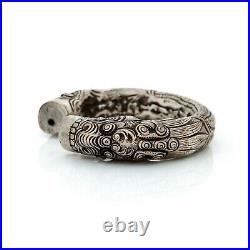

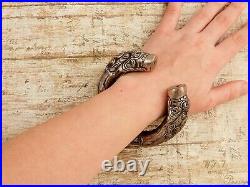

We have several similar Chinese items, which would pair nicely with this piece, for sale this week. Listing Description by: Dylan L. Age Circa: Art Deco C. Markings: Unmarked , Tested, and Guaranteed. Country of Origin: China. Gram Weight: 113.4 Grams. Main Stone Carat Weight/Color. Accent Stone(s). Accent Stone Carat Weight/Color. Item Measurements: The bracelet has a wearable length of about 8″ long including the wrist gap, with a width of up to 0.84″ wide at its widest. The smaller wrist gap measures 0.88″ wide, and the larger wrist gap measures 2.46″ wide. Bracelet Type: Cuff Bracelet. Closure/Clasp Type: This bracelet is meant to be worn over the wrist through the gap. 925 Sterling Silver Band. This bracelet was handmade during the Art Deco era. The Art Deco era saw a great deal of change not only in the art of jewelry making but in the world itself. New styles of speaking, acting, dressing, and living developed with the invention of new technology and ideologies, all of which affected the appearance of jewelry. Jewelry during the Art Deco era, or the Gatsby era, leaned towards flashy, with gorgeous large stones serving as the focal points of the pieces of jewelry. Modernity and style were the drivers in the jewelry world during the Art Deco era, as is evidenced by this lovely item of jewelry. 925 sterling silver, the bracelet would have been made by an expert Chinese artisan with the intent of exporting to the Western world. Since the Victorian era, wealthy Europeans had been custom ordering jewelry from China as Chinese jewelers were considered some of the best in the world. The process of ordering, making and receiving a Chinese export piece could take months at a time, so pieces like this bracelet were very expensive and highly desirable. This lovely item likely would have been made in part by using the repousse technique. The repousse technique dates back as far as the 3rd century BC and involves hand hammering precious metals into beautiful and intricate patterns. This item features a great deal of details as well organic and geometric motifs, which was common for Chinese export jewelry. This gorgeous bracelet is composed of. 925 sterling silver and is incredibly heavy in metal value. This bracelet weights 113.4 grams, and is an incredible example of Art Deco era Chinese export jewelry. The dragon motif is complex and features a great deal of details, adding to the overall effect of this item. Some of the details were added to this item using the chasing technique, which involves hand etching intricate details into solid metal. This gorgeous bracelet has a wearable length of 8 long, which means it hangs fairly loose on the wrist while being worn, allowing the bracelet to move freely as the wrist moves. This lovely bracelet has a large wrist gap, allowing it to be applied and removed from the wrist easily and quickly. There are two holes on either side of the wrist gap, which likely once supported some type of clasp. However, there is no clasp upon this bracelet presently, and the item is secure on the wrist as-is. A stunning example of Chinese export jewelry from the Art Deco era, this bracelet would make a valuable addition to any antique jewelry collection. Don’t miss your chance to own this piece of cultural history. Damage: Age appropriate wear. This item is fairly tarnished in the low relief areas, which is to be expected of an item this age, and adds to the character of the item. This item may have once had some type of connector and clasp, but no longer does. This does not affect the wear of the item whatsoever. The price of this item has been reduced to reflect this. This listing is for the item only. The Art Deco era is famous for being the “Gatsby” or “Roaring Twenties” era. A lot of gorgeous and timeless designs in jewelry came out of this period. Jewelry from this period was most often crafted between 1920 and 1940. Art Deco jewelry sometimes featured white gold or platinum, geometric designs, European cut diamonds, filigree, and calibre cut stones that are specifically cut to fit the design of the piece. During the Art Deco period jewelers often made jewelry upon custom order, this would often take weeks to months to completely craft by hand. Chinese export jewelry became popular during the late Victorian period and persisted until the 1960s. During this period, Chinese craftsmen were considered by far the best in the world. The rich and wealthy would custom-order a piece through their local jeweler, who would send the design off to China to be made and sent back to Europe. This lengthy process was very expensive, making Chinese export pieces highly desirable, then and now. Repoussé began as an ancient metalworking technique dating as far back as the 3rd century BC, involving malleable metal that was hammered onto the reverse side to create an image on the front. Examples are found all over the world; Greece, Egypt, and even the Hopewell periods in the American southeast. Reverse side hammering was also used to add detail to the front, creating intricate patterns using grooves, indentations, and channeling. The piece was then carefully polished to create a hollow, eye-catching treasure. Chasing is a metalworking technique that uses a nail-like tool and hammer to hand etch patterns onto a metal surface. This process creates a design that is sunk into the front of the surface using indentations, grooves, and channels. Chasing is thousands of years old and was a very difficult and time-consuming technique that is still used by metalsmiths today. The item “Antique Vintage Deco Sterling Silver Chinese Export Dragon HUGE Cuff Bracelet” is in sale since Sunday, June 16, 2019. This item is in the category “Jewelry & Watches\Vintage & Antique Jewelry\Fine\Art Nouveau/Art Deco 1895-1935\Bracelets”. The seller is “abeautifultimeco” and is located in Fort Collins, Colorado. This item can be shipped worldwide.
- Modified Item: No
- Country/Region of Manufacture: China
- Style: Cuff
- Metal Purity: .925
- Metal: Sterling Silver
- Ethnic Origin: Chinese

